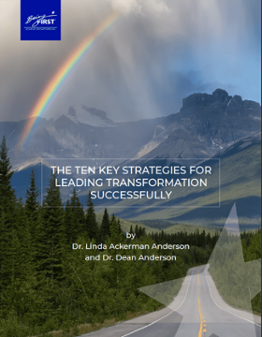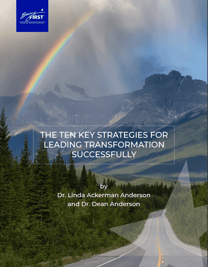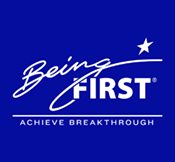Knowing which type of change your organization is undergoing is critical to your success. Three types exist, and each requires different change strategies, plans and degrees of employee engagement. A very common reason for failure in transformational change is leaders inadvertently using approaches that do not fit the type of change they are leading. Is this happening in your organization?
The three types of change occurring in organizations today are: (1) developmental, (2) transitional, and (3) transformational. Traditional project management and change management effectively support developmental and transitional change, but they are woefully insufficient for transformational change. You will need to understand the type of change you are in to know whether typical project or change management approaches can work for you.
Developmental Change
Developmental change is the simplest type of change: it improves what you are currently doing rather than creates something new. Improving existing skills, processes, methods, performance standards, or conditions can all be developmental changes. Specific examples include increasing sales or quality, interpersonal communication training, simple work process improvements, team development, and problem-solving efforts.
Transitional Change
Transitional change replaces “what is” with something completely new. This requires designing and implementing a “new state.” The organization simultaneously must dismantle and emotionally let go of the old way of operating while the new state is being put into place. This “transitional” phase can be project managed and effectively supported with traditional change management tools. Examples include reorganizations, simple mergers or acquisitions, creation of new products or services that replace old ones, and IT implementations that do not radically impact people’s work or require a significant shift in culture or behavior to be effective.
Two variables define transitional change: (1) you can determine your destination in detail before you begin, and can, therefore, “manage” your transition, and (2) people are largely impacted only at the levels of skills and actions, not the more personal levels of mindset, behavior and culture.
Transformational Change
 Transformation, however, is far more challenging for two distinct reasons. First, the future state is unknown when you begin, and is determined through trial and error as new information is gathered. This makes it impossible to “manage” transformation with pre-determined, time-bound and linear project plans. You can have an over-arching change strategy, but the actual change process literally must “emerge” as you go. This means that your executives, managers and frontline workers alike must operate in the unknown—that scary, unpredictable place where stress skyrockets and emotions run high.
Transformation, however, is far more challenging for two distinct reasons. First, the future state is unknown when you begin, and is determined through trial and error as new information is gathered. This makes it impossible to “manage” transformation with pre-determined, time-bound and linear project plans. You can have an over-arching change strategy, but the actual change process literally must “emerge” as you go. This means that your executives, managers and frontline workers alike must operate in the unknown—that scary, unpredictable place where stress skyrockets and emotions run high.
Second, the future state is so radically different than the current state that the people and culture must change to implement it successfully. New mindsets and behaviors are required. In fact, often leaders and workers must shift their worldviews to even invent the required new future, let alone operate it effectively.
Without these “inner” shifts of mindset and culture, the “external” implementation of new structures, systems, processes or technology do not produce their intended ROI. For example, many large IT implementations fail because they require a mindset and culture change that does not occur, i.e., the new systems require people to share information across strongly held boundaries or put the needs of the enterprise over their own turf agendas. Without these radical changes in attitude and behavior, people do not use the technology as designed and the change fails to deliver its ROI.
Implications for the Workforce
Because transformation impacts people so personally, you must get them involved in it to garner their support; and the earlier in the process of formulating your transformation strategy the better! Employee resistance is always in direct proportion to the degree to which people are kept in the dark and out of the change process. Here are some options for employee engagement.
Get staff engaged in building your case for change and determining the vision for the new state. Consider using large group meeting technologies, which can involve hundreds of people simultaneously in short periods of time.
Consider putting a wider representation of people on your change leadership team. Provide mindset, behavior, and change skill development to all employees. Use employee groups to identify your customers’ requirements for your transformation, and to benchmark what “best-in-class” organizations are doing in your industry. Ask employee groups to input to enterprise-wide changes that impact them, and give them the authority to design the local changes for improving their work (they know it best.) Then before implementation, get them involved in doing an impact analysis of your design to ensure that it is feasible and won’t overwhelm your organization beyond what it can handle.
When you engage your employees in these ways before implementation, you minimize resistance. Use such strategies to support your change efforts, especially if they are transformational.
Watch the related video:
What Is Transformation?
Dr. Linda Ackerman Anderson and Dr. Dean Anderson discuss what transformation is and explore the critical areas of a transformation strategy that ensure success.
 Download the related eBook:
Download the related eBook:
The Ten Key Strategies for Leading Transformation Successfully
Through 40 years of observing and supporting large-scale change and transformation in Fortune 500, government, global NGOs and public service organizations, we've identified these ten Best Practice strategies that provide a systematic approach to consciously leading people through the complexities of transformation.
Please complete the form to download your eBook:


